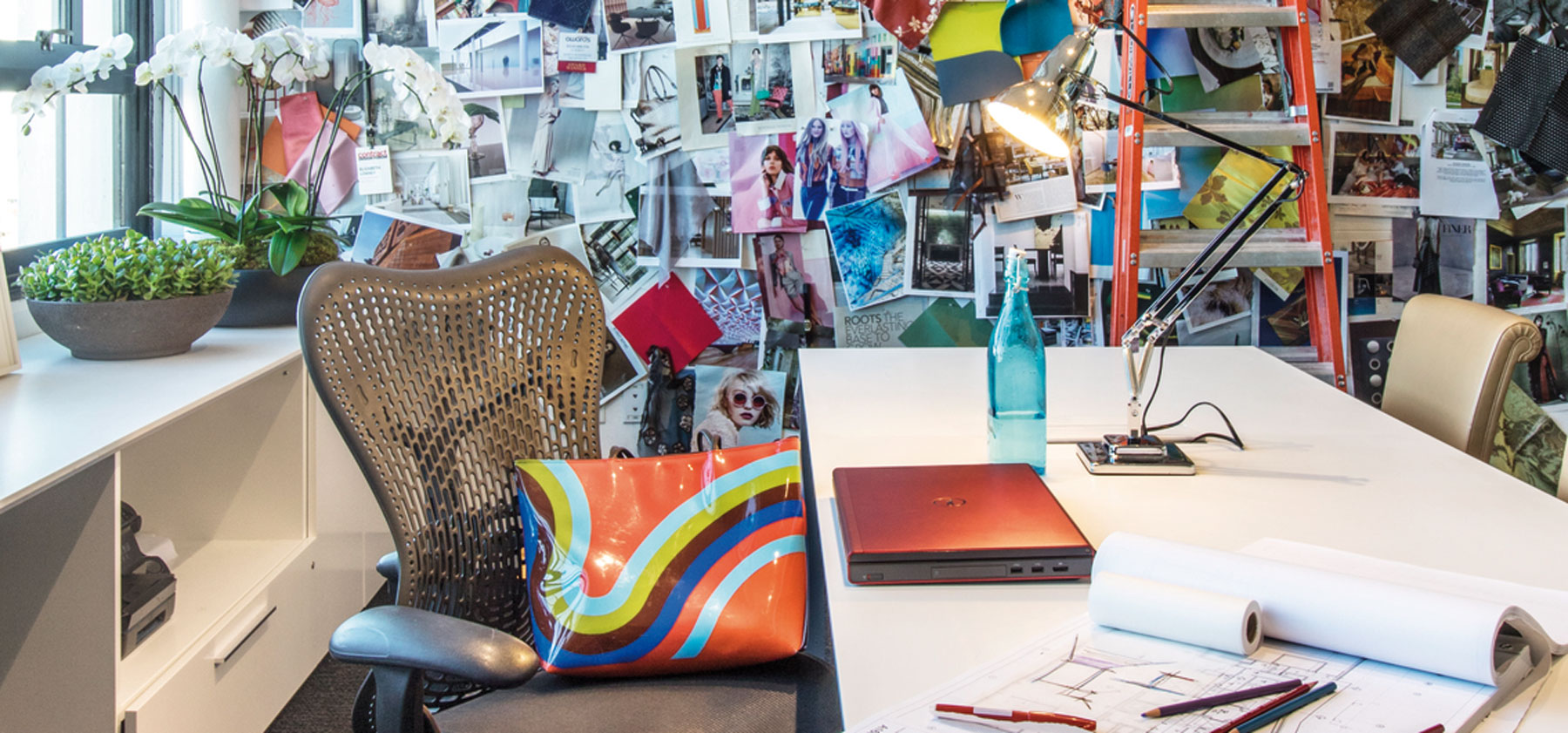
Inspiration in Trying Times
Principal and Director of Interior Architecture Elizabeth Lowrey contributed to Contract magazine’s Multivitamin column, sharing how she is finding inspiration during the pandemic.
We are in the first weeks of physical distancing during the COVID-19 pandemic, sitting in our home offices like soldiers in our bunkers. In spite of the terrible costs and the anxiety we are all feeling, I am also inspired by the ways in which our team at Elkus Manfredi Architects is supporting each other, and I hope the changes I see will stay with us when this has passed.
Creative collaboration is an essential component of good design. We’re used to working together in a studio, handling the same materials, looking at colors in the same light and unconsciously communicating via subtle clues like eye contact, facial expression, body language and conversational pacing. Now, we’re still working together, but in a new, more limited way, and we need new work rituals and habits that build “collaborative intelligence” online.
One of the things I’ve enjoyed is people’s interest in seeing each individual as a whole person. Now that we’re working “together alone,” we get excited about seeing each other on the screen. Last week we started a brief ritual you might call “show and tell.” One person held up her cat, named Martini. One person had her baby wave to everyone. Others introduced their partners for a moment.
One architect’s wife has recovered from cancer. Months ago, someone sent them a plant that blooms periodically as a symbol of life returning. He placed that plant into his home office where we can see it online. Now we’re all counting the days until it blooms again. I can’t tell you how much that means to everyone.
You could see the stress on people’s faces at first. And I’m delighted that now people are showing up with smiles on their faces. I look forward to seeing that cat named Martini, and that blooming plant, and seeing the baby wave before we get down to business. Starting on a personal note helps us ease into the creativity and collaboration that’s essential to design work.
Many peopled were originally self-conscious about video conferencing without dressing up in their “office look.” Now that our days have actually gotten busier, those little professional personas are easing up. We’re no less professional in our work but something about being in the bunker together, riding out this storm, has made us more emotionally available to each other. By attending to a videoconference as our “at home” selves, we’re signaling a stronger sense of camaraderie and mutual concern.
Besides seeing me during video conferences, my colleagues and clients see this original print by my sister Sheridan Lowrey, created while she was working with Morphosis Architects and inspired by Thom Mayne’s design for the Golf Club at Chiba Prefecture. The print is hanging on the wall behind me and I love that more people can now see it.
You can work with someone for 15 years and then realize you’ve never been to their house or met their partner. You’ve never seen the Shona sculpture on the desk or the Japanese prints on the wall. Even my college-age kids love peering into the online meeting for a moment to see, “Oh, that’s what that person looks like.” They’ve got a new window into my work.
People share tips about better ways to work. One designer discussed “home ergonomics.” Another demonstrated how an ironing board can be an adjustable standing/sitting desk. A person recommended smartphone apps that coach you to take stretching breaks through the workday. These are small gestures that add up to a lot of community bonding.
We’re cutting each other a bit of slack too. Some people are working at home with young children because the schools and daycare are closed, which is an incredible struggle. In response, I’ve seen their team members showing understanding and patience and helping where they can. I hope we hold onto these moments of gratitude and grace.
My neighborhood in Boston borders a hospital. The other day a person wrote to the neighborhood mailing list: “I’m a licensed hairdresser and I’ve got a studio in my house. I will cut any medical professionals’ hair for free if someone can advise me how to do it safely.”
When I witness such generosity amid all this tension and terror, I resolve to bring that spirit back to the office when we return. For now, the computer screen has become our studio worktable, and I think it also leveled the psychological hierarchy a bit. We’ll have more mentoring and more seats at the table. In the past few years everybody’s become habituated to rush, rush, rush – maybe we can learn to pause, to see each other and our clients a little more fully, and perhaps preserve the lessons of common humanity. If we do that, imagine the good we can create when we all emerge from the bunker.
This column first appeared in Contract on April 15, 2020.
